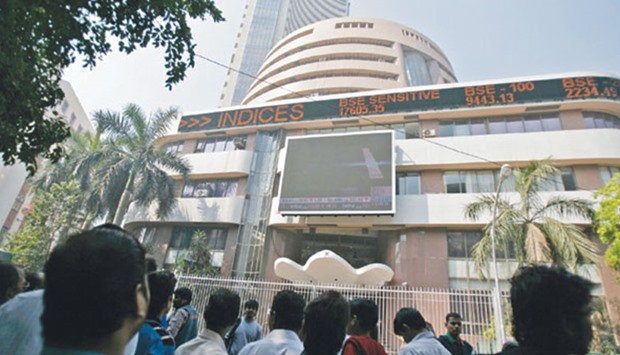Indian stocks advanced for a second day in thin trading, with automakers helping the benchmark index climb to a four-week high.
Bajaj Auto and Hero MotoCorp, the biggest motorcycle makers, and Mahindra & Mahindra, the nation’s largest tractors company, were the top percentage gainers on the S&P BSE Sensex. Hindustan Unilever retreated from a four- month high. Bharat Heavy Electricals, a government- controlled power-equipment maker, fell the most in three weeks.
The Sensex increased 0.2% at the close in Mumbai, while the Nifty 50 Index rose less than 0.1%, with trading volume in stocks on the gauge 23% below the 30-day average.
Overseas investors bought a net $75mn of Indian stocks on December 23, a fifth day of purchases that helped pare this quarter’s withdrawals to less than $600mn. December month equity-derivative contracts are due to expire on Thursday.
“Buying by foreign investors has shored up the indexes,” D.K. Aggarwal, chairman of SMC Investments in New Delhi, said by phone.
“The indexes may trade in a range, given the volatility around expiry.” Aggarwal said he’s recommending clients buy power, software and banking companies.
Traders have replaced 44% of current month futures with January contracts, data compiled by Bloomberg show.
Mahindra & Mahindra rose 1.2%, the most in a week. Bajaj Auto was the top gainer on the Sensex, climbing 1.5%. Hero MotoCorp added 0.8% to pare this year’s loss to 12%.
Hindustan Unilever lost 0.9%, the most since December 8.
Bharat Heavy tumbled 1.7% to extend this year’s slide to 36%. Coal India, the world’s biggest producer of the fuel, decreased 1.2%.
The Sensex has fallen 5.2% this year so far, poised for its worst annual performance in four years.
It trades at 15.6 times projected 12-month earnings, compared with a multiple of 10.9 for the MSCI Emerging Markets Index.
Meanwhile the rupee fell on speculation importers took advantage of its eight-day rally to buy dollars more cheaply to pay month-end bills.
The rupee weakened 0.3% to 66.3950 a dollar in Mumbai, prices from local banks compiled by Bloomberg show.
It climbed 1.4% in the last eight days, the longest run of gains since June 2011.
The currency has risen 0.4% in December in the second-best performance in emerging Asia.
“Importers perhaps found the levels attractive to accumulate dollars,” said Navin Raghuvanshi, a Mumbai-based foreign-exchange trader at DCB Bank.
The increased foreign- investment limits for Indian bonds are expected to bring inflows and that’ll be positive for the rupee, he said.
The South Asian nation will grant overseas investors access to an additional Rs165bn ($2.5bn) of sovereign and state-government notes from January 1, part of a September plan to allow a phased increase in the limits.
DCB Bank joins Edelweiss Financial Services and RBL Bank in predicting this week that the new quotas will attract global funds, whose holdings of rupee-denominated debt have declined Rs98.2bn over December and November amid a rise in US interest rates.
The yield on sovereign notes due May 2025 was little changed at 7.76%, prices from the central bank’s trading system show. It rose one basis point on Monday after increasing two basis points last week.
India plans to sell Rs140bn of government notes at an auction on January 1, according to a central bank statement after the close of markets Monday.
The government last sold debt at a December 11 sale, raising Rs150bn after underwriters stepped in to purchase unsold securities.
Concern that supply will soon resume and the uncertainty surrounding the issuance timing of a new 10-year benchmark bond is hurting sentiment, Vijay Sharma, executive vice president for fixed income at PNB Gilts in New Delhi, said on Monday.

SENSEX
